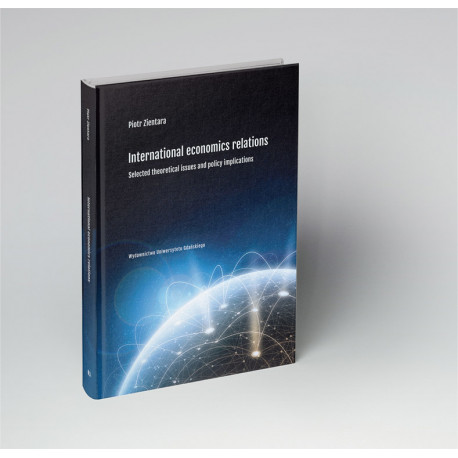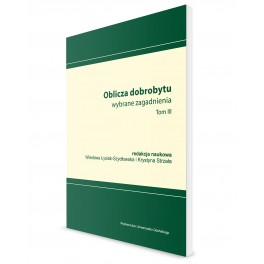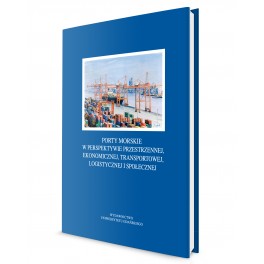Opis
International economics relations. Selected theoretical issues and policy implications
Wydawnictwo Uniwersytetu Gdańskiego
Autor: Piotr Zientara
Podręcznik zatytułowany International economic relations: Selected theoretical issues and policy implications składa się z pięciu rozdziałów. Książka skierowana jest do studentów kierunków, na których językiem wykładowym jest angielski oraz do wszystkich osób interesujących się szeroko rozumianymi międzynarodowymi stosunkami gospodarczymi. Pozycja nie pretenduje do całościowego ujęcia problematyki MSG, a skupia się na wybranych kwestiach, które z względu na swą aktualność, złożoność i doniosłość są godne szczególnej uwagi.
Pierwszy rozdział poświęcony został gospodarce światowej z uwzględnieniem jej historii, struktury i podmiotów. W rozdziale drugim skoncentrowano się na problemie ubóstwa i nierówności (rozwarstwienia), zarówno w skali globalnej (tj. pomiędzy państwami), jak i w ujęciu lokalnym (tj. w konkretnych krajach). W rozdziale trzecim omówiono mechanizmy migracji międzynarodowych i transgraniczny transfer wiedzy i technologii. Skoncentrowano się zwłaszcza na przepływie siły roboczej wewnątrz Unii Europejskiej oraz na konsekwencjach nielegalnej imigracji do krajów bogatych. W rozdziale czwartym przedstawiono wybrane kwestie finansów międzynarodowych. Natomiast rozdział piąty poświęcono problemowi integracji ekonomicznej i politycznej w Ameryce Południowej. Podręcznik zatem stanowi próbę przybliżenia czytelnikowi szerokiego spektrum zagadnień z dziedziny międzynarodowych stosunków gospodarczych.
Table of contents
Introduction . . . . . . . . . . . . . . . . . . . . . . . . . . . 7
Chapter 1. The global economy: History, structure, actors . . . . . . . 11
1.1. The global economy in historical perspective . . . . . . . . . . . . 11
1.1.1. The cold-war period . . . . . . . . . . . . . . . . . . . 11
1.1.2. The world after the collapse of the Berlin Wall . . . . . . . . 19
1.1.3. International organisations and institutions . . . . . . . . . 23
1.2. Globalisation: Causes and consequences . . . . . . . . . . . . . . 32
1.2.1. The character of globalisation processes . . . . . . . . . . . 32
1.2.2. Criticism of globalisation . . . . . . . . . . . . . . . . . 34
1.3. Summary . . . . . . . . . . . . . . . . . . . . . . . . . . . 37
Chapter 2. The development gap between North and South:
Poverty and inequality in the world . . . . . . . . . . . . . . . . . 39
2.1. Socio-economic underdevelopment in the world . . . . . . . . . . 39
2.1.1. Causes of poverty and civilizational retardation . . . . . . . . 39
2.1.2. Consequences of underdevelopment . . . . . . . . . . . . 42
2.2. International aid: Rationale and effectiveness . . . . . . . . . . . . 43
2.2.1. Forms of international assistance . . . . . . . . . . . . . . 43
2.2.2. Effectiveness of international aid . . . . . . . . . . . . . . 50
2.3. Dimensions and implications of inequality . . . . . . . . . . . . . 52
2.3.1. Character of inequality . . . . . . . . . . . . . . . . . . 52
2.3.2. Debate on inequality . . . . . . . . . . . . . . . . . . . 55
2.4. Summary . . . . . . . . . . . . . . . . . . . . . . . . . . . 59
Chapter 3. Cross-border flows of labour and technology . . . . . . . . 61
3.1. International flows of labour . . . . . . . . . . . . . . . . . . . 61
3.1.1. Economic and socio-psychological mechanisms
underlying migratory movements . . . . . . . . . . . . . . 61
6 Table of contents
3.1.2. Consequences of emigration . . . . . . . . . . . . . . . . 66
3.1.3. The impact of immigration on receiving economies . . . . . . 68
3.2. International flows of technology . . . . . . . . . . . . . . . . . 76
3.2.1. The character and implications of technological progress . . . . 76
3.2.2. The mechanics of cross-border technology transfer . . . . . . 78
3.3. Summary . . . . . . . . . . . . . . . . . . . . . . . . . . . 83
Chapter 4. International finance: Selected aspects . . . . . . . . . . . 85
4.1. The balance of payments . . . . . . . . . . . . . . . . . . . . 85
4.1.1. The function and components of the balance of payments . . . 85
4.1.2. A balance-of-payments crisis: Causes and consequences . . . . 87
4.2. The global monetary system . . . . . . . . . . . . . . . . . . . 92
4.2.1. A historical perspective . . . . . . . . . . . . . . . . . . 92
4.2.2. Fixed and floating exchange-rate regimes . . . . . . . . . . 95
4.3. Summary . . . . . . . . . . . . . . . . . . . . . . . . . . 100
Chapter 5. Economic integration in Latin America . . . . . . . . . . 103
5.1. Mercosur . . . . . . . . . . . . . . . . . . . . . . . . . . 103
5.1.1. The raison d’être and institutions of Mercosur . . . . . . . . 103
5.1.2. Mercosur member states in main international rankings . . . 106
5.1.3. Conclusions and policy implications . . . . . . . . . . . . 110
5.2. CARICOM . . . . . . . . . . . . . . . . . . . . . . . . . 112
5.2.1. Objectives and institutions . . . . . . . . . . . . . . . . 112
5.2.2. The development level of CARICOM member states . . . . . 114
5.2.3. Conclusive remarks . . . . . . . . . . . . . . . . . . . 118
5.3. Summary . . . . . . . . . . . . . . . . . . . . . . . . . . 119
References . . . . . . . . . . . . . . . . . . . . . . . . . . . . 121











Opinie
Na razie nie ma opinii o produkcie.